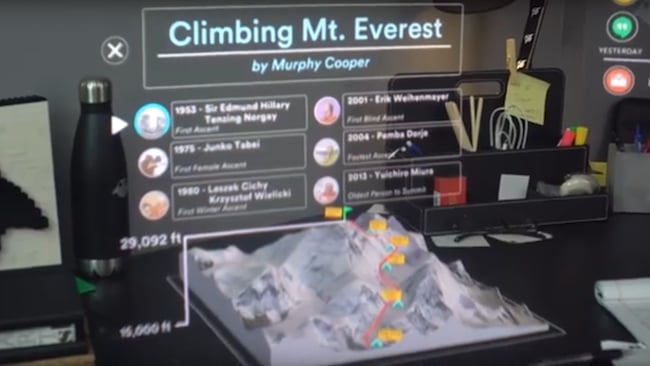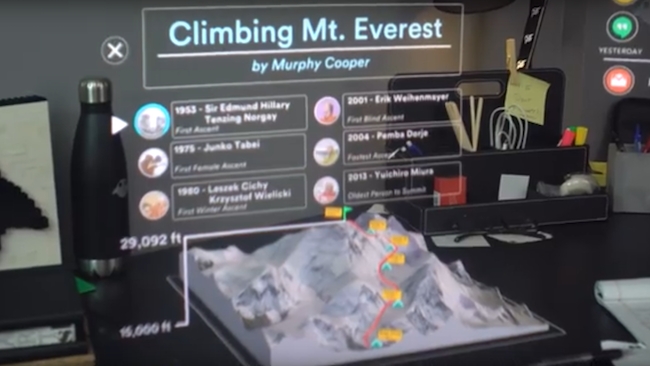
 Magic Leap's vision of what the desk of the future will look like
Magic Leap's vision of what the desk of the future will look like
It's grainy, it's not even very polished, but the company promises it's real: fresh postings from the $8 billion-funded augmented reality lab at Magic Leap lend further credence to the belief that what is up to in secret may truly represent one giant leap.
For a technology so shrouded in mystery that we still have no idea quite how it works, what it will look like, how much it will cost, or when it will be available, Magic Leap has done a mighty fine job of grabbing headlines and whipping up anticipation. Now, even as Microsoft readies its own augmented reality system, HoloLens, and VR offerings from Oculus and Vive finally ship to early adopters, Magic Leap looks as alluring as ever.
The latest video to slip out from the secretive US and New Zealand-based company gives the clearest through-the-lens view to date of its ‘mixed reality’ blend of high-fidelity digital imagery and real-world environments. Interestingly, while the company’s first teaser hinted at the gaming potential for the device (a first-person shooter dubbed ‘Dr. Grordbort’ based on that one is currently in development), this one seems designed to highlight the virtues of the device as a hand-free, screenless computer interface. It’s one whose nature will be all-too-familiar to fans of Minority Report, though tellingly even that movie didn’t dare to posit a user-interface unencumbered by either physical location or hand controllers.
Given the assertion that these videos were created without the aid of any compositing or other tricks, Magic Leap has clearly moved well beyond the realms of vapourware. That $4.5 billion valuation, plus a clutch of patents describing multiple methods and systems to control the much vaunted ‘photonic light field chip’ that effectively beams fully composited 3D imagery directly into the user’s retinas, have undoubtedly borne fruit.
Along with Magic Leap Inc’s own video teaser, the company was also the subject of a recent Wired article and short accompanying video, which offers a fresh look at that photonics lens technology along with a glimpse at the ongoing in-house work dedicated to harnessing the technology. The company’s fresh recruitment drive also helps give some idea what Magic Leap is all about, listing as it does job openings across multiple engineering, software and design posts, alongside vacancies in marketing, legal and administrative departments.
This imminent swelling of the ranks also highlights the fact that, while the hardware is now up and running (albeit likely in far less portable form than the lightweight glasses expected with the final design, plus integration between real and CG elements noticeably kept to a minimum in the demo) the nature of mixed reality itself is still up for grabs. While tools are now emerging to help game developers, filmmakers and artists get to grips with virtual reality systems, this kind of augmented reality device requires a whole new toolset for content creation.
Even the very nature of that content (and just how it will account for the unpredictable geometry of the user’s real world environment) remains something of an unknown quantity. The shift to a system that - by augmenting the world around the viewer rather than replacing it and working with the user’s natural depth perception rather than fudging the issue with a ‘flat’ CG overlay - promises an unprecedented degree of immersion along with unique opportunities for shared experiences, throws up all kinds of questions, opportunities and challenges (both technical and creative).
Remove our total reliance on TVs, monitors and cinema screens and you have a digital entertainment revolution on your hands, but the complexity of augmented reality world-building may yet prove a serious stumbling block for many of the more fanciful and ambitious applications.
Tags: VR & AR


Comments